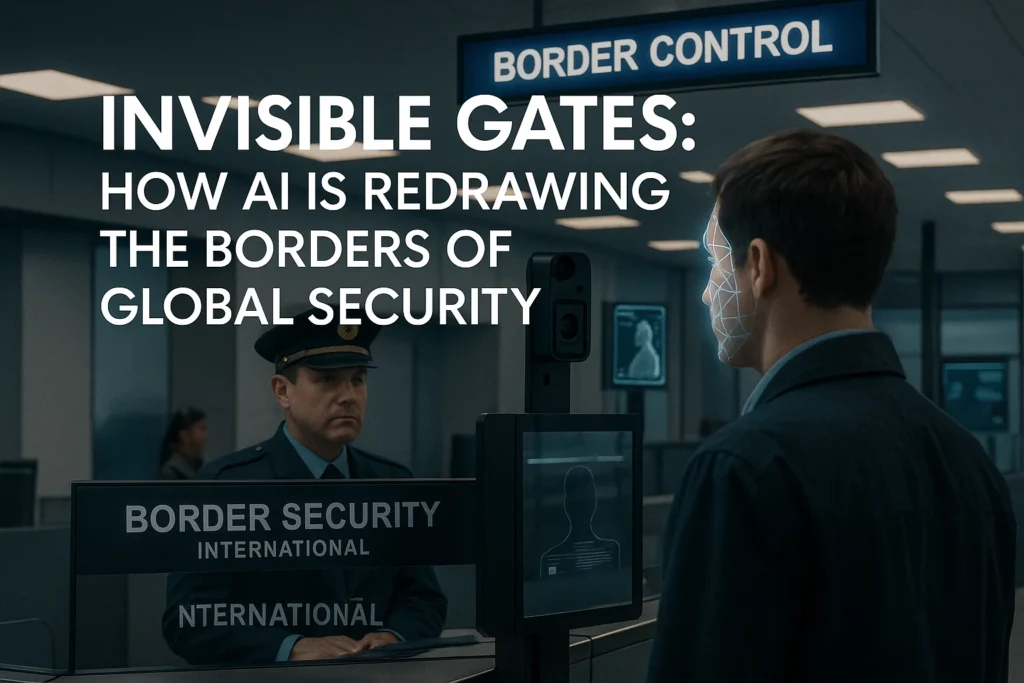The line at Dubai International Airport’s Terminal 3 moves with uncanny speed. Travelers approach sleek kiosks, glance briefly at a screen, and moments later, a soft chime signals approval. No frantic passport shuffling, no tense questions. For Sarah Chen, arriving from Singapore, the process feels like magic. “It was faster than buying coffee,” she remarks, unaware that sophisticated AI algorithms analyzed her facial structure, the subtle rhythm of her walk, and even fleeting micro-expressions as she approached the gate. Welcome to the new frontier of border security, where invisible systems scan, assess, and decide, raising profound questions about safety, privacy, and the very nature of freedom of movement.
Beyond the Stamp: The AI Toolkit at the Gate
Forget just checking passports. The new wave of border technology employs a multi-layered approach:
- Hyper-Accurate Facial Recognition: Today’s systems use deep learning to verify identity with extreme precision, even with aging or challenging lighting. These systems cross-reference live captures against vast government databases and international watchlists in milliseconds.
- Gait Analysis: Your Walk is Your Password: How you walk – your stride length, rhythm, arm swing – is surprisingly unique. Systems use overhead cameras to analyze this biometric signature, offering a covert layer of identification, especially useful if someone tries to obscure their face.
- The Controversial Rise of Emotion AI: Algorithms now attempt to detect deception, stress, or hostile intent by analyzing micro-expressions, eye movements, voice pitch, and body language. Several countries are actively trialing this at borders.
Global Rollout: Where the “Invisible Gates” Stand
This technology is now operational worldwide:
- United States: Major airports now use advanced facial recognition for both entry and exit, processing millions of travelers. Trials integrating emotion analysis are ongoing at select checkpoints.
- United Arab Emirates: A global leader, the UAE uses comprehensive facial recognition and is aggressively testing emotion analysis and gait identification.
- South Korea: A pioneer in efficiency, leveraging facial recognition and gait analysis integrated with pre-arrival risk assessment systems.
- European Union: Rolling out a new system mandating biometric registration for non-EU nationals, with AI playing a key role in matching and verification.
- Singapore: Sophisticated facial recognition is seamlessly integrated into airport processes from check-in to immigration.
The Promise: Security, Speed, and Efficiency
Governments champion these systems for compelling reasons:
- Enhanced Threat Detection: AI can identify known individuals from watchlists far faster and potentially more accurately than humans in crowded environments. Proponents argue emotion analysis adds a layer for spotting suspicious behavior.
- Dramatically Faster Processing: Automating identity verification slashes wait times from hours to minutes, improving the traveler experience and boosting airport capacity.
- Fraud Prevention: Sophisticated systems make it incredibly difficult to travel using fake or stolen passports.
- Contactless Processing: Minimizes physical contact, a significant benefit in the post-pandemic era.
The Peril: Privacy, Bias, and the Unknown
However, the rise of the “Invisible Gate” triggers deep alarm:
- Mass Surveillance & Privacy Erosion: The collection of sensitive biometric data creates vast government databases. Concerns mount over whether this data could be used for broader surveillance or social tracking.
- The Accuracy Problem & Algorithmic Bias: No AI is perfect. Facial recognition has documented problems with accuracy, particularly for women, people of color, and younger/older individuals. False positives cause distress; false negatives pose security risks. Gait and especially emotion analysis are far less proven and scientifically contested. Bias in training data can bake discrimination into the system.
- Emotion AI: Flawed Science?: Critics argue emotion recognition technology lacks strong scientific backing. Using it risks flagging innocent people who are simply tired, stressed, or culturally express emotions differently.
- Lack of Transparency & Due Process: Travelers flagged by an algorithm may have no clear understanding of why or meaningful recourse to challenge the decision.
- Data Security & Function Creep: The risk of breaches involving sensitive biometric data is catastrophic. Once collected, how else might this data be used or shared?
The Legal and Ethical Quagmire
The rapid deployment has outpaced legal and ethical frameworks:
- Patchwork Regulations: Laws vary significantly across regions, with clear international standards lacking.
- The Illusion of Consent: Is true consent possible when refusing screening means denied entry or lengthy checks?
- The “Security” Justification Trap: National security arguments often bypass scrutiny and limit transparency.
The Road Ahead: Finding Balance
As AI-powered borders become entrenched, the critical question is: Can we harness the benefits without sacrificing fundamental rights? Potential paths include:
- Strict Limits: Banning or imposing moratoriums on the least reliable tech, like emotion recognition. Requiring regular legislative review.
- Robust Oversight: Independent auditing for accuracy and bias, especially across demographic groups.
- Stronger Data Protection: Explicitly regulating biometric data collection, storage, usage, and security. Granting rights to access and delete data.
- Transparency & Redress: Clear explanations when flagged and accessible appeal processes.
- International Cooperation: Developing global ethical standards to prevent a race to the bottom on privacy.
Conclusion: Who Watches the Watchers?
The “Invisible Gates” are here. The hum of servers and the silent gaze of AI cameras now mediate our passage between nations. While promising safer borders and smoother journeys, this technology demands vigilance. The efficiency of Dubai’s terminals or the speed of Seoul’s immigration comes with a hidden cost: the normalization of pervasive biometric surveillance.
The choices made in the coming years will determine whether these systems serve as sophisticated tools for security or become instruments of unprecedented control. As Sarah Chen exits the sterile efficiency of Dubai’s AI checkpoint, she feels a strange mix of relief and unease. The gate opened swiftly, but who, or what, was truly watching? Ensuring the answer protects both our security and our humanity is the defining challenge of this new border landscape.



